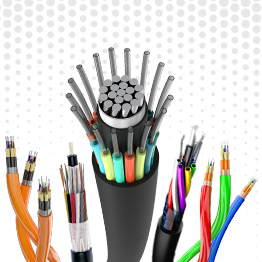
The article explores why cable management is considered essential in the world of technology and office setups, discussing various methods to achieve it, highlighting its benefits, and evaluating the cost-efficiency of implementing such systems.
Why Cable Management is Necessary
Cable management involves organizing and containing cables and wires for electrical and electronic equipment to ensure a neat, safe, and efficient working environment. Proper cable management is critical in preventing accidents such as tripping over loose wires, which can lead to injury or damage to equipment. It also plays a significant role in maintaining equipment by preventing dust accumulation and potential overheating, thus extending the lifespan of the hardware.
Factors Determining the Worth of Cable Management
The worth of investing in cable management depends on several factors including the complexity of the setup, the type of equipment used, and the specific needs of the environment (e.g., office, data center, industrial settings). In environments where multiple electronic devices are in use, such as data centers or recording studios, effective cable management becomes indispensable for operational efficiency and safety.
Methods of Cable Management
Several methods can be employed to manage cables effectively:
- Cable Clips and Ties: These are simple and cost-effective tools that help in bundling cables together and can be easily attached to desks or walls to route wires neatly.
- Wire Trays and Channels: These are more robust solutions that involve installing trays or channels under desks or along walls to conceal and protect large bundles of wires.
- Cable Sleeves and Boxes: Sleeves wrap around a group of cables to consolidate them into a single tube, while boxes contain power strips and excess lengths of cables, minimizing clutter.
Benefits of Cable Management
The primary benefits of effective cable management include:
- Increased Safety: Reduces the risk of tripping hazards and electrical fires.
- Enhanced Performance: Maintains optimal airflow around devices, preventing overheating.
- Improved Aesthetics: Creates a cleaner and more organized space, which can boost productivity and create a professional appearance.
- Ease of Maintenance: Simplifies cleaning and makes it easier to replace or update cables and equipment without disruption.
Cost-to-Benefit Ratio
While the initial setup for comprehensive cable management solutions might involve some expenditure, the long-term benefits often outweigh the costs. In professional environments, the prevention of equipment failure and workplace accidents can result in significant cost savings. Moreover, the boost in efficiency and the prolongation of equipment life can further justify the investment.
Conclusion
Ultimately, whether cable management is worth it largely depends on the specific requirements of the setup and the potential risks associated with unmanaged cables. For most businesses and tech-heavy environments, the advantages of implementing a systematic approach to cable management are clear, offering both functional and financial benefits that surpass the initial costs. Thus, investing in good cable management is not just about keeping cables tidy, but about ensuring a safer, more efficient, and reliable operational environment.

